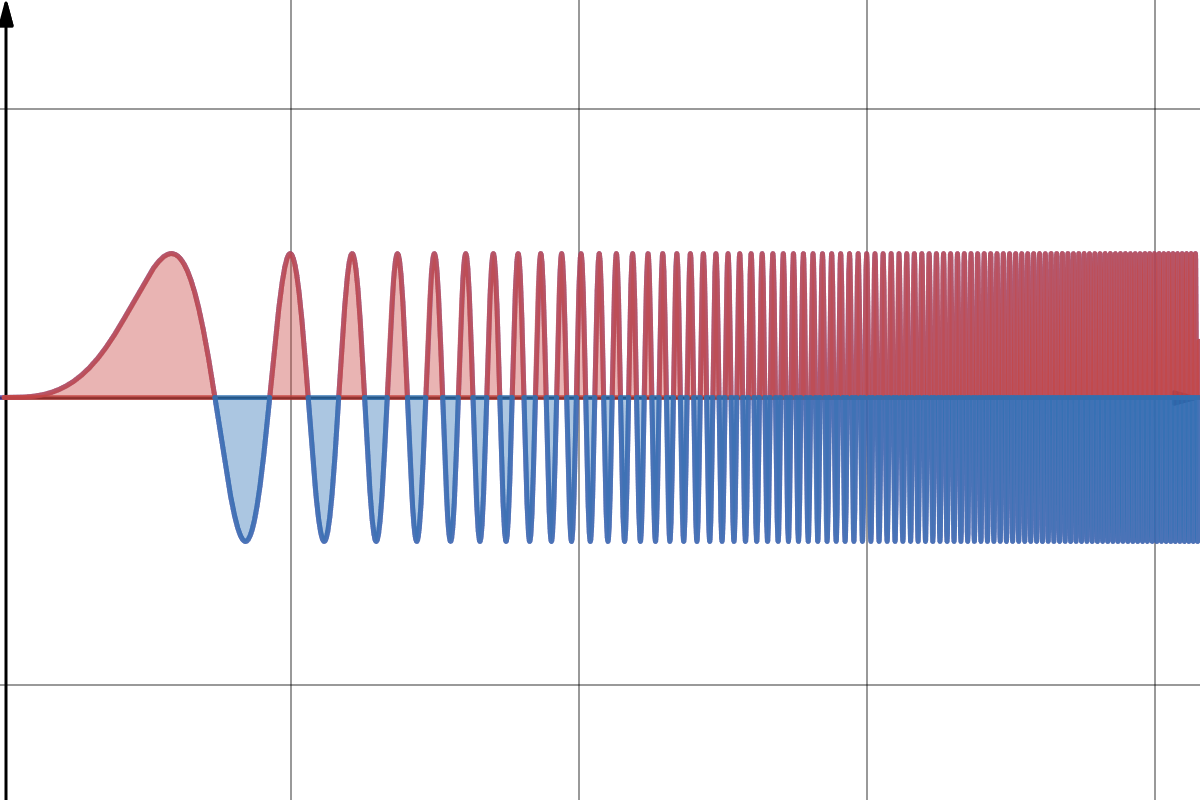Sine and Cosine
⎩ ⎪ ⎨ ⎪ ⎧ S ( n ) = ∫ 0 ∞ sin ( x n ) d x C ( n ) = ∫ 0 ∞ cos ( x n ) d x
The slope of y = C ( n ) S ( n ) at n = 3 π is − π + π cos B A .
Submit your answer as
A
×
B
.

The answer is 27.
This section requires Javascript.
You are seeing this because something didn't load right. We suggest you, (a) try
refreshing the page, (b) enabling javascript if it is disabled on your browser and,
finally, (c)
loading the
non-javascript version of this page
. We're sorry about the hassle.
1 solution
Can you please explain the second equality? I have done it in another, much longer way, but I can't understand that equality:
u 1 ∫ 0 ∞ y u 1 − 1 sin y d y = u Γ ( u 1 ) sin 2 u π
Thanks!
Log in to reply
If you integrate z v − 1 e i z around the quadrant contour formed by
- the real axis between ε and R ,
- the circular arc z = R e i θ for 0 ≤ θ ≤ 2 1 π ,
- the imaginary axis between i ε and i R ,
- the circular arc z = ε e i θ for 0 ≤ θ ≤ 2 1 π ,
and let R → ∞ and ε → 0 , then you can show that ∫ 0 ∞ x v − 1 e i x d x = Γ ( v ) e 2 1 π i v whenever 0 < v < 1 .
Using a couple of fairly standard integrals, S ( u ) C ( u ) = ∫ 0 ∞ sin ( x u ) d x = u 1 ∫ 0 ∞ y u 1 − 1 sin y d y = u Γ ( u 1 ) sin 2 u π = ∫ 0 ∞ cos ( x u ) d x = u 1 ∫ 0 ∞ y u 1 − 1 cos y d y = u Γ ( u 1 ) cos 2 u π valid for u > 1 . Thus C ( u ) S ( u ) = tan 2 u π has derivative − 2 u 2 π sec 2 2 u π = − u 2 ( 1 + cos u π ) π for u > 1 . When u = 3 1 π this derivative equals − π ( 1 + cos 3 ) 9 making the answer 2 7 .